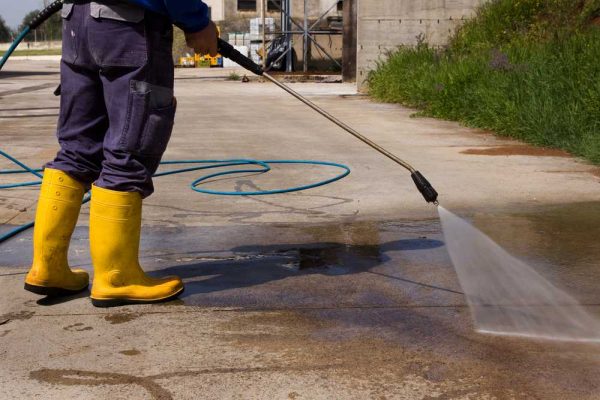49 Little Know Pressure Washing Facts

- 1. Pressure cleaning is also known as power washing.
- 2. Pressure cleaning uses a high-pressure water stream to clean surfaces.
- 3. The pressure of a pressure washer is measured in PSI (pounds per square inch).
- 4. A typical pressure washer can produce pressures ranging from 1,000 PSI to 4,000 PSI or more.
- 5. Pressure washing can be used for cleaning a wide range of surfaces, including concrete, brick, wood, and metal.
- 6. Pressure washing can be used for both residential and commercial cleaning applications.
- 7. Pressure washing can be used for cleaning a wide range of surfaces, including concrete, brick, wood, and metal.
- 8. Pressure cleaning can help to increase the curb appeal and value of a property.
- 9. Pressure washing can help to prevent damage to surfaces by removing harmful substances like mold and mildew.
- 10. Pressure cleaning can be done using hot or cold water, depending on the surface being cleaned.
- 11. Hot water pressure washing is more effective for cleaning surfaces with oil or grease stains.
- 12. Pressure cleaning is an environmentally friendly cleaning method since it does not require the use of harmful chemicals.
- 13. Pressure cleaning can save water compared to traditional cleaning methods, such as using a hose and bucket.
- 14. Pressure cleaning can be done using a gas-powered or electric-powered pressure washer.
- 15. Gas-powered pressure washers are more powerful and portable but also louder and more expensive.
- 16. Electric-powered pressure washers are quieter, less expensive, and more suitable for smaller cleaning tasks.
- 17. Pressure cleaning can be done using different nozzle tips that can be switched out depending on the cleaning task.
- 18. Nozzle tips with a wider spray angle are better for cleaning larger areas, while nozzle tips with a narrower spray angle are better for focused cleaning tasks.
- 19. Pressure washing can be dangerous if not done correctly, so it is important to wear protective gear and follow safety guidelines.
- 20. Pressure cleaning can damage surfaces if the pressure is too high or if the nozzle tip is too close to the surface.
- 21. Pressure washing can cause injuries if the pressure stream comes into contact with skin or eyes.
- 22. Pressure cleaning should not be done on fragile or easily damaged surfaces, such as windows, roofs, or painted surfaces.
- 23. Pressure cleaning should not be done on surfaces with loose or peeling paint since it can cause further damage.
- 24. Pressure cleaning should not be done on surfaces that have been treated with sealant or other protective coatings since it can strip the coating off.
- 25. Pressure cleaning should not be done on surfaces with electrical equipment or outlets nearby.
- 26. Pressure cleaning should not be done on surfaces with standing water or puddles since it can create a slip and fall hazard.
- 27. Pressure cleaning should be done on a stable and level surface to prevent accidents.
- 28. Pressure cleaning should be done in a well-ventilated area to prevent the buildup of fumes.
- 29. Pressure cleaning should be done during daylight hours to ensure good visibility.
- 30. Pressure cleaning should be done at a distance of at least 6 inches from the surface being cleaned.
- 31. Pressure cleaning should be done in a sweeping motion to avoid leaving streaks or lines on the surface.
- 32. Pressure cleaning should be done in sections, starting from the top and working downward.
- 33. Pressure cleaning should be done using a detergent or cleaning solution that is safe for the surface being cleaned.
- 34. Pressure cleaning should not be done on surfaces that have been treated with chemical treatments or pesticides since it can spread the chemicals.
- 35. Pressure cleaning can be done as a DIY project or by hiring a professional pressure cleaning service.
- 36. Professional pressure cleaning services have the experience, knowledge, and equipment to handle different types of cleaning tasks and surfaces safely and effectively.
- 37. Professional pressure cleaning services can save time and effort compared to DIY cleaning.
- 38. Professional pressure cleaning services can offer specialized cleaning services, such as graffiti removal, gutter cleaning, and roof cleaning.
- 39. Professional pressure cleaning services can offer a guarantee for their work and may have liability insurance to cover any damages.
- 40. Pressure cleaning can help to prepare surfaces for painting or staining by removing dirt and grime.
- 41. Pressure cleaning can help to improve the lifespan of surfaces by removing harmful substances that can cause decay or deterioration.
- 42. Pressure cleaning can be used to clean outdoor furniture, decks, and patios.
- 43. Pressure cleaning can be used to clean vehicles, such as cars, trucks, and boats.
- 44. Pressure cleaning can be used to clean outdoor grills and cooking surfaces.
- 45. Pressure cleaning can be used to clean swimming pools and pool decks.
- 46. Pressure cleaning can be used to clean sidewalks, driveways, and parking lots.
- 47. Pressure cleaning can be used to clean commercial and industrial equipment and machinery.
- 48. Pressure cleaning can be used to clean HVAC systems and air ducts.
- 49. Pressure cleaning is a versatile and effective cleaning method that can be used for a wide range of cleaning tasks and surfaces.

